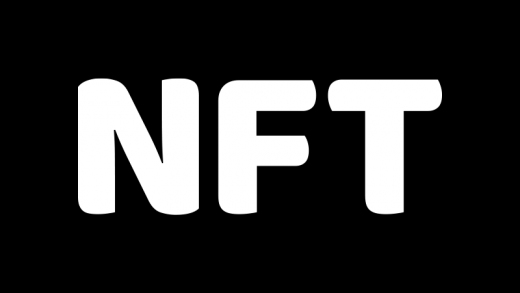Circle’s $58 Million USDC Freeze
On May 28, 2025, Circle, the issuer of the USDC stablecoin, executed one of its largest-ever asset freezes, locking approximately $57.65 million in USDC across two Solana wallets tagged as “Libra” and “Libra Deployer” by Arkham Intelligence. The freeze was initiated in response to a temporary restraining order (TRO) issued by the U.S. District Court for the Southern District of New York (SDNY), requested by Burwick Law with support from co-counsel Tim Treanor. The affected wallets held approximately $44 million and $13 million in USDC, respectively, and are now immovable pending a preliminary injunction hearing scheduled for June 9, 2025.
The court order stems from a class-action lawsuit filed by Burwick Law against Kelsier Ventures, Meteora, and several individuals, including Hayden Davis, Ben Chow, Julian Peh, and others, for their alleged roles in the Libra token scandal. The freeze aims to preserve assets for potential restitution to investors who suffered significant losses when the Libra token’s value collapsed by over 90% shortly after its launch. Circle’s action underscores its compliance with U.S. legal mandates, as the company has a history of freezing funds in response to law enforcement requests, such as the $100,000 USDC freeze in 2020 and $63 million in 2023 following the Multichain breach.
However, the freeze has sparked debate within the crypto community. Some investors, like one who lost over $500,000 on Libra, argue that such actions undermine the censorship-resistant ethos of cryptocurrencies, potentially harming the broader ecosystem. Others see it as a necessary step to combat fraudulent schemes and protect investors. Circle has not publicly commented on the freeze beyond confirming compliance with the court order, leaving some details unclear, including whether the action was also influenced by Argentine judicial requests.
The Libra Pump-and-Dump Scandal: A Summary
The Libra memecoin, launched on February 14, 2025, on the Solana blockchain, became one of the most high-profile crypto scandals of the year due to its rapid rise and catastrophic fall. The token was created by Hayden Davis, CEO of Kelsier Ventures, with involvement from entities like KIP Protocol and Meteora. Its launch gained unprecedented attention when Argentine President Javier Milei endorsed it on social media, claiming it would boost Argentina’s economy and support small businesses. Within hours, Libra’s price skyrocketed from near zero to nearly $5, reaching a peak market cap of over $4 billion.
However, the token’s value plummeted by 95% shortly after, as insiders, including wallets linked to the Libra team, sold off significant holdings, withdrawing approximately $107 million in profits. Blockchain analytics from Bubblemaps and investigator Stephen Findeisen (Coffeezilla) revealed that a key wallet, “0xcEA,” transferred 1.6 million USDC to Solana wallets just before Libra’s launch, which then purchased 3.77 million Libra tokens and sold them for 8.25 million USDC, netting $6.65 million in profits. This pattern of rapid buying and selling fueled accusations of a coordinated pump-and-dump scheme.
The scandal’s fallout extended beyond financial losses. It triggered a political firestorm in Argentina, with investigations into President Milei’s involvement, including fraud charges and financial crime reports filed in both Argentine and U.S. courts. Argentine lawyer Gregorio Dalbon requested an Interpol Red Notice for Hayden Davis, citing his role in the token’s creation and potential flight risk due to access to substantial funds. The token, now trading at around $0.032 with minimal volume on exchanges like MEXC, remains a stark reminder of the risks in memecoin markets.
Implications for the Crypto Ecosystem
Circle’s freeze of $58 million in USDC highlights the tension between centralized control and the decentralized ethos of cryptocurrencies. As a regulated entity, Circle’s ability to blacklist addresses—demonstrated in prior incidents like the Tornado Cash sanctions and Multichain breach—reflects its commitment to compliance but raises concerns about centralization. Critics, including on-chain sleuth ZachXBT, have previously criticized Circle for delays in freezing maliciously acquired funds, such as in the $1.5 billion Bybit hack, contrasting its actions with Tether’s quicker responses.
The Libra scandal also underscores the vulnerabilities in memecoin markets, where hype driven by high-profile endorsements can lead to rapid price surges followed by devastating crashes. The involvement of a sitting head of state like Milei amplifies the scandal’s impact, raising questions about regulatory oversight and the influence of public figures in crypto markets. The ongoing lawsuits and potential restitution through Circle’s frozen funds may set precedents for addressing similar schemes in the future.
Looking Ahead
As Circle prepares for its IPO, aiming for a $5.65-$6.71 billion valuation, its handling of the Libra scandal could influence investor confidence and regulatory perceptions. The frozen $58 million may be burned and potentially re-minted to compensate victims, depending on the outcome of the June 9 hearing. Meanwhile, the crypto community remains divided, with some viewing the freeze as a step toward accountability and others as a threat to decentralization. The Libra case serves as a cautionary tale, emphasizing the need for due diligence and robust regulatory frameworks in the volatile world of cryptocurrencies.
For more details, follow updates from Burwick Law’s class-action lawsuit or check blockchain analytics platforms like Solscan for on-chain activity related to the frozen wallets.












